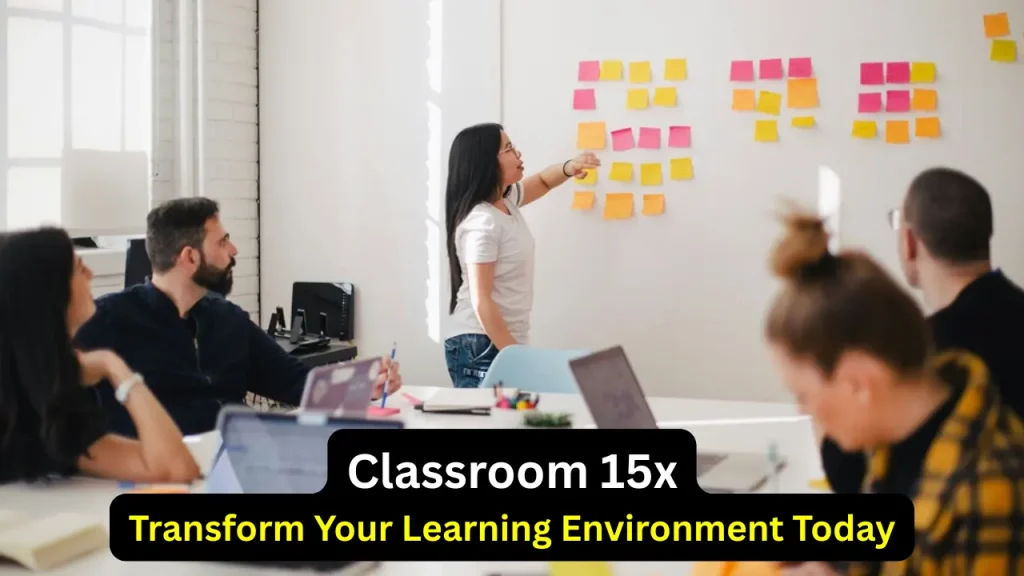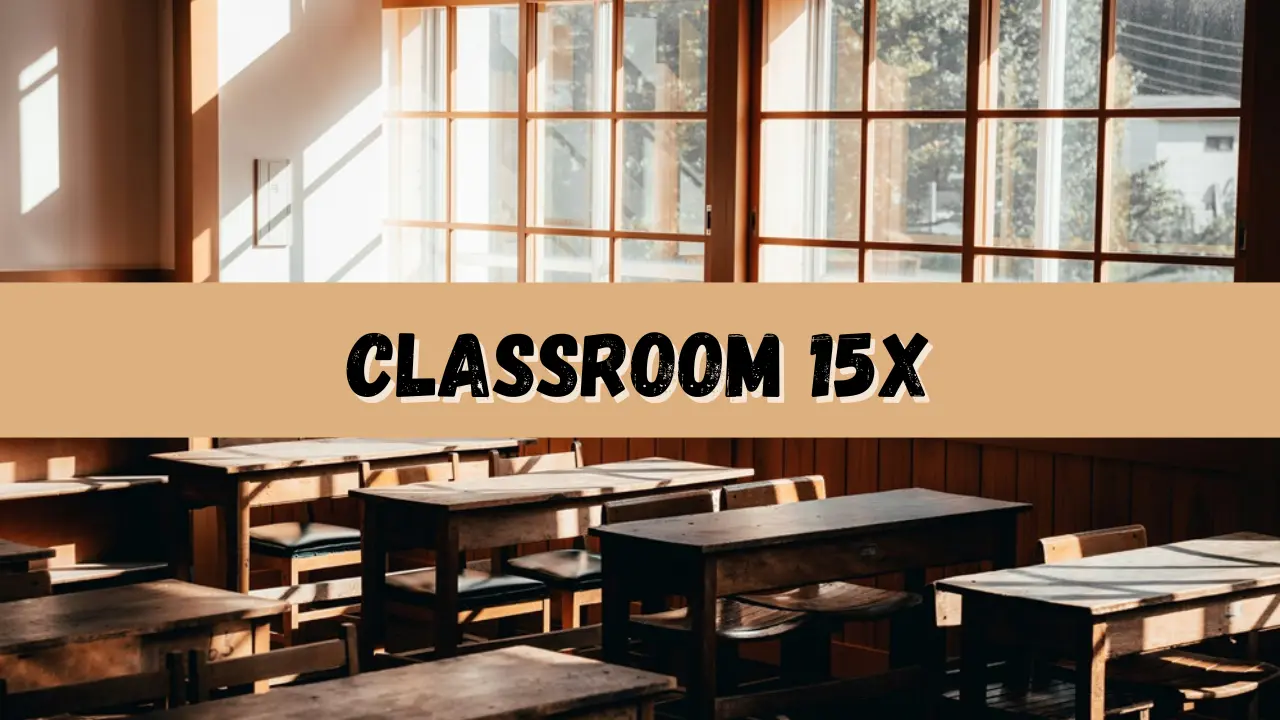Classroom 15x: Transform Your Learning Environment Today
Creating an engaging and effective classroom is no longer just about desks and chalkboards. Schools now recognize the huge impact that smart design and technology have on student learning. Classroom 15x is a fresh approach that focuses on flexible spaces, modern tools, and inclusive environments. This guide explores how this innovative model can change education for the better. Ready to discover how Classroom 15x can shape the future of schools? Let’s dive in.
What is Classroom 15x? An Overview
Definition and Core Concept
Classroom 15x is a new way of designing classrooms to boost student interaction and learning. Unlike traditional rooms with fixed furniture and a teacher at the front, it prioritizes space that adapts to different teaching styles. The heart of Classroom 15x is flexibility—classrooms that can change in seconds to fit lessons, group work, or independent study.
Origin and Development
The concept started gaining traction in the early 2020s, driven by educators and architects who wanted more engaging learning spaces. Pioneers like Dr. Jane Miller and tech companies pushing smart classroom tools played key roles. They believed that a shift in design could spark better student interest and higher achievement. Today, many schools are adopting this approach to stay ahead in education trends.
Why It Matters Today
In our fast-changing world, traditional classrooms no longer meet the needs of diverse learners. Classroom 15x offers a way to make learning more dynamic, inclusive, and effective. Evidence shows that well-designed spaces help students stay motivated and improve their test scores. It’s a smart move for schools aiming to prepare students for the future.
Also See: MyFastBroker.com
Key Features and Design Principles of Classroom 15x
Flexible and Modular Layouts
It uses movable furniture like desks, chairs, and partition walls. Teachers can quickly reshape the space for group work, individual tasks, or presentations. This flexibility allows for a variety of teaching methods in one day. Students benefit from a space that adapts to their activities and needs.
Integrated Technology Solutions
Smart boards, tablets, and interactive displays make lessons more engaging. Data-driven tools help teachers track student progress and personalize lessons. Kids can work on devices that connect to their learning plans, making homework and classwork more interactive. Technology turns the classroom into a hub of active learning.
Emphasis on Collaboration and Student-Centered Learning
Design elements promote teamwork, like small tables and breakout zones. Students aren’t just sitting in rows anymore—they’re encouraged to talk, share ideas, and help each other. The inclusion of project areas helps students develop real-world skills through hands-on activities and peer learning.
Sustainable and Eco-Friendly Materials
Classroom 15x emphasizes using eco-conscious materials. Recycled furniture and energy-efficient lighting reduce environmental impact. These choices also teach students to care about sustainability as part of their education. Green classrooms are healthier for everyone and save costs over time.

Benefits of Implementing Classroom 15x
Improved Student Engagement and Motivation
Studies link innovative classroom designs with increased student interest. When students feel comfortable and excited about their environment, they want to learn more. Schools that have adopted Classroom 15x report higher participation and enthusiasm among students.
Enhanced Teacher Effectiveness
Flexible spaces empower teachers to tailor lessons to different learning styles. They can switch from lectures to group projects effortlessly. Case studies show teachers punch above their weight in such environments, often feeling more satisfied and supported in their work.
Better Learning Outcomes and Academic Performance
Data from schools using Classroom 15x show notable boosts in test scores. Students tend to retain more knowledge when they engage actively with their surroundings. For example, some schools saw a 10% increase in math and reading scores after redesigning classrooms.
Promoting Equity and Inclusivity
Designing for accessibility ensures all students can participate. Features like ramps, adjustable desks, and multisensory tools support diverse learning needs. The environment becomes more welcoming for students with disabilities and different learning styles.
Challenges and Solutions in Adopting Classroom 15x
Financial and Budget Constraints
Transforming classrooms isn’t cheap. Schools need new furniture, tech tools, and renovation funds. Applying for grants or spreading costs over time can help. Starting small—perhaps a few classrooms—builds momentum without breaking the bank.
Resistance to Change
Not everyone embraces new ideas easily. Teachers and admins might worry about disrupting routines. Providing proper training and showing success stories help ease fears. When everyone understands the benefits, buy-in becomes easier.
Technical and Infrastructure Barriers
Reliable Wi-Fi, enough power outlets, and technical support are essentials. Investing in infrastructure early prevents headaches later. Regular training ensures staff can use new tools confidently and troubleshoot problems as they come.
Maintaining Flexibility Over Time
Design isn’t a one-time job. Keeping spaces fresh and functional involves upgrades and feedback. Periodic surveys of teachers and students can guide improvements, ensuring the classroom remains a living, breathing environment.
Implementation Strategies and Best Practices
Planning and Needs Assessment
Start with a clear picture of what your school wants to achieve. Assess your space, budget, and the needs of your students and staff. Planning ahead saves time and money in the long run.
Designing for Flexibility and Future Growth
Choose furniture and tech that can grow with your school. Modular furniture, portable devices, and adaptable layouts mean your classroom can evolve without costly renovations.
Professional Development and Training
Invest in ongoing training sessions for teachers. Learning new tech tools and teaching methods maximizes the benefits of Classroom 15x. Happy, skilled teachers make the biggest impact.
Community Engagement
Involve parents, students, and staff from the start. Sharing plans and successes builds support and pride. Community input often leads to smarter design choices and better results.
Real-World Examples and Case Studies
Successful Examples of Classroom 15x Adoption
Sunrise Middle School in Texas transformed a handful of rooms into flexible learning labs. After redesign, test scores climbed 12%, and student participation soared. Another school in California integrated tech-driven zones that encouraged innovation and teamwork.
Lessons Learned from Early Adopters
Early adopters faced hurdles like budget limits and resistance but found solutions through phased rollouts and clear communication. They learned that ongoing feedback kept the spaces useful and engaging. The key is patience and continuous refinement.
The Future of Classroom 15x: Trends and Innovations
Emerging Technologies and Tools
Artificial intelligence and virtual reality promise to make classrooms even more interactive. Data analytics will help tailor lessons to each student. Imagine a classroom where each kid’s learning path is uniquely crafted on the fly.
Policy and Funding Developments
Governments are increasingly supporting modern school designs with grants and new policies. These funds make it easier for schools to innovate without heavy upfront costs.
Long-Term Impact on Education Ecosystems
Classroom 15x could reshape how we teach and learn worldwide. It’s not just about new furniture—it’s about creating environments that prepare students for a fast-changing future. Scalability and adaptability will be critical in this new era.
Final Thoughts on Classroom 15x
Classroom 15x has the potential to revolutionize education. By blending flexible spaces, cutting-edge tech, and inclusive design, schools can boost student success significantly. Challenges like cost and resistance exist but are manageable with smart planning. If you’re an educator or policymaker, it’s time to explore how these innovative classrooms can create more engaging, equitable, and effective learning experiences. The future of education is flexible—and it starts here.





